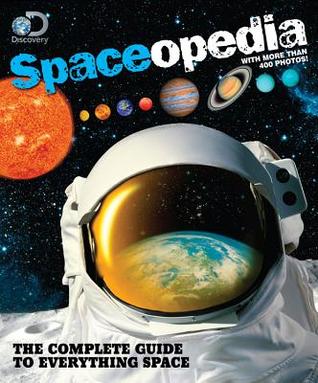
Packed with excellent photos and facts, the Discovery Spaceopedia covers everything from the life cycle of stars to NASA technology that is now used on Earth. The organization makes it easy to find specific topics by using the table of contents or the "At a Glance" page that begins each section. There are plenty of helpful charts, diagrams, captions, and sidebars. Definitions of unfamiliar words appear in a small text box shaped like an open book. The back matter includes suggestions of science centers to visit and activities to try.
One of the features that I thought was very helpful was the way comparisons were made. For example, the heat of the sun is compared to a hot summer day, a barbecue grill, and a volcano to illustrate the difference in the intensity of the heat. In another section, the rotation of planets is compared to things that spin such as tops or merry-go-rounds. The use of familiar objects as a basis for the comparisons makes them easier to grasp.
There will be something to catch the interest of almost any reader among the topics that are covered. Constellations, stars, planets, asteroids, rockets, space missions, astronauts, telescopes, the space station...it really does cover nearly everything related to space. If a reader is most interested in black holes and supernovae, they are pictured and explained. or, if a reader prefers to learn about astronaut training and things like the "Vomit Comet" and coping with microgravity, that is covered, too.
Whether you read straight through from cover to cover, or sample here and there as something catches your eye - it will be an enjoyable experience either way. It is a great book for introducing concepts that will be studied in more depth, either by an individual or a class. I plan to add a copy of this title to my school's library.
I read an e-book provided by the publisher through NetGalley.
Looks and sounds like a great read. I know I will enjoy it and I hope to get it and share it with the students in my library. Thanks for sharing.
ReplyDelete